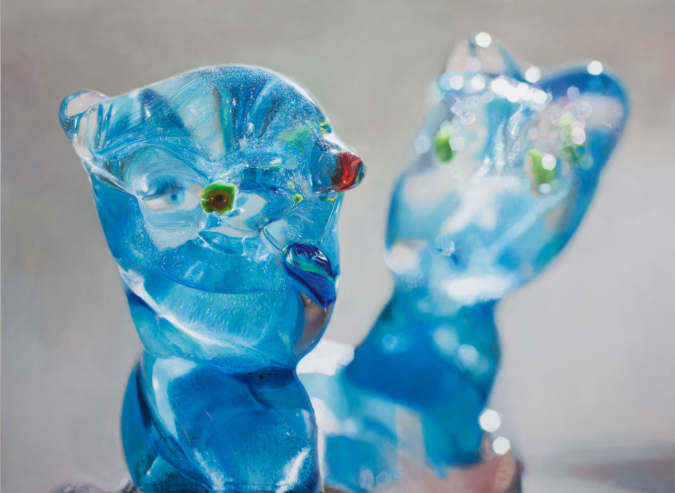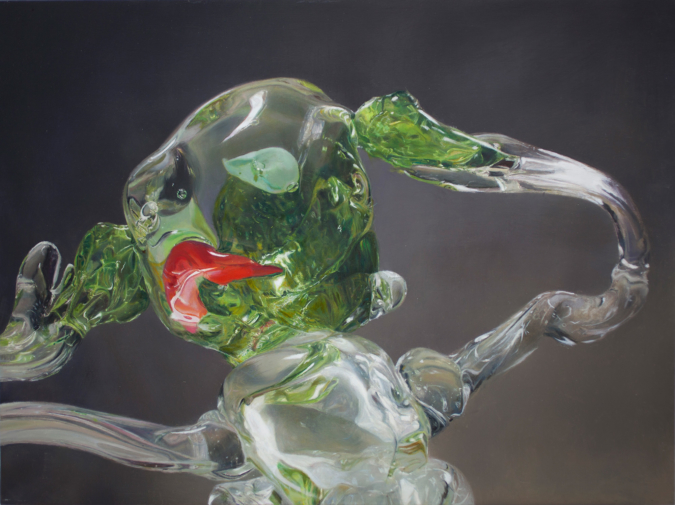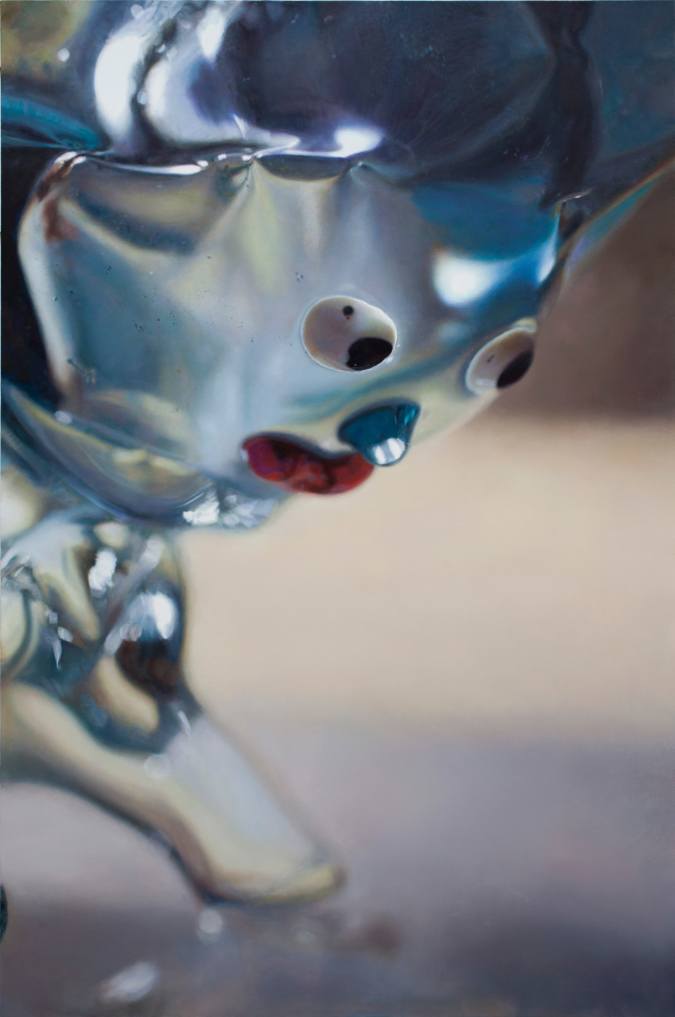Jim Butler
Jim Butler received a BFA from The Rhode Island School Of Design and MFA from Indiana University. Although painting is a primary focus, consideration of the medium is malleable. Blown glass, sculptural flipside of painting’s coin, is a favorite material. His work wonders at the nature of what it is to make a thing.
Tibor De Nagy Gallery presented a cycle of recent paintings in a 2017 solo show entitled “Synaptic Reverb”. Other recent exhibitions include “Revolutionary Folk” and a 2016 solo show of blown glass sculptures at Gridspace in Brooklyn. A 2017 studio interview can be found on the podcast Magic Praxis. This May he will be an Artist-In-Residence at The Corning Museum Of Glass Studio developing new blown glass sculptures embedded with hi-resolution imagery.
He lives and works between Brooklyn, NY and Shoreham, Vt.
Question:
Do you think of the heads in your paintings as characters? Is the nature of each character formed as you spend long hours with a painting or do they spring instantaneously when working spontaneously with the hot glass? Because you are enlarging the figurines in the paintings, large passages become abstract. Does the abstraction enhance understanding of the character or does character and abstraction co-exist but as separate melodies (qualities)?
Answer:
Humans are ventriloquists. We all give voice to imaginary characters and I’m fascinated by these interior lives. Like most people I talk to myself, having regular conversations with others of all types: the good, bad, and the ugly. These paintings are my Charlie McCarthys.
For me glassblowing is drawing in three-dimensions. A close cousin of painting it also creates illusion by suspending color in space. Its nature, though, is very unpredictable: since it’s essentially out of control, working “with it” is an oxymoron. I choose to see this as an advantage because hot-glass sculpting can facilitate direct channels into un-premeditated graphic abstraction. It’s of my hand yet defeats conscious intention. This slippery-grip opens a window into making forms I haven’t seen before.
Miro and Picasso’s painterly re-invention of figuration through abstraction leaves me slack-jawed. Their languages created worlds full of imaginative suggestion populated by complexity of the sentient. Drawn figures of great specificity marvelously evade easy categorizations. I’m seeking to conjure beings similarly elusive in expression but through a new formal synthesis of abstraction and representation. And, as the subconscious often can, I want it all to reflect emotional vibrations of our present moment.
So, yes, I intend every aspect of my pictures, recognizable and abstract, to work together to build environments the viewer can feel. This occurs during each stage of the process; from thinking them up, to blowing them in glass, photographing, and then painting them. It’s a unified continuum.
For me, representational or not, everything in a painting is recognizable.








